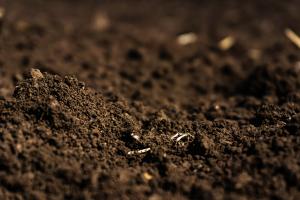# Possible article:
## Why Does My Snake Plant Have Brown Spots?
Snake plants, also known as sansevierias, are popular houseplants for their tough, low-maintenance nature and attractive foliage. However, like any plant, they can develop problems over time, such as brown spots on their leaves. If you're wondering why your snake plant has brown spots, here are some possible reasons and solutions.
### Lack of water or excessive water
One of the most common causes of brown spots on snake plant leaves is improper watering. If the soil is too dry or too wet, the leaves can become stressed and show signs of damage. To check the soil moisture, stick your finger or a moisture meter about an inch deep into the soil. If it feels dry, it's time to water your plant; if it feels moist or saturated, wait until it dries out before watering again. Ideally, snake plants prefer to be on the drier side, as they are drought-tolerant plants. However, they still need regular watering to thrive.
### Poor drainage or soil quality
Another factor that can affect snake plants' health is the drainage and soil quality. If the pot doesn't have drainage holes or the soil is overly compacted, the water can't drain out properly, causing root rot and brown spots on the leaves. To improve drainage, make sure your pot has drainage holes and use a well-draining soil mix with perlite, sand or pebbles added to it. Also, avoid over-fertilizing your snake plant, as excess nutrients can also burn the leaves and cause brown spots.
### Pests or diseases
A less common but possible cause of brown spots on snake plant leaves is pests or diseases. Spider mites, mealybugs, scale insects, and fungal infections can damage the leaves, typically by creating small, brown lesions or spots. Check your plant regularly for any signs of pests or diseases, such as webbing, white fuzz, or powdery spots. If you detect any, treat your plant immediately with an appropriate insecticide or fungicide, following the instructions on the label.
In conclusion, if your snake plant has brown spots, it's typically a sign of stress caused by improper watering, poor drainage, or pests and diseases. By adjusting your care routine, providing a suitable growing environment, and promptly treating any problems you encounter, you can help your snake plant recover and thrive. Remember to also prune any damaged or dead leaves to encourage new growth and maintain the plant's appearance. With a little attention, you can enjoy your snake plant's beauty and benefits for years to come.

 how many times do yo...
how many times do yo... how many planted tre...
how many planted tre... how many pine trees ...
how many pine trees ... how many pecan trees...
how many pecan trees... how many plants comp...
how many plants comp... how many plants can ...
how many plants can ... how many plants and ...
how many plants and ... how many pepper plan...
how many pepper plan...





























